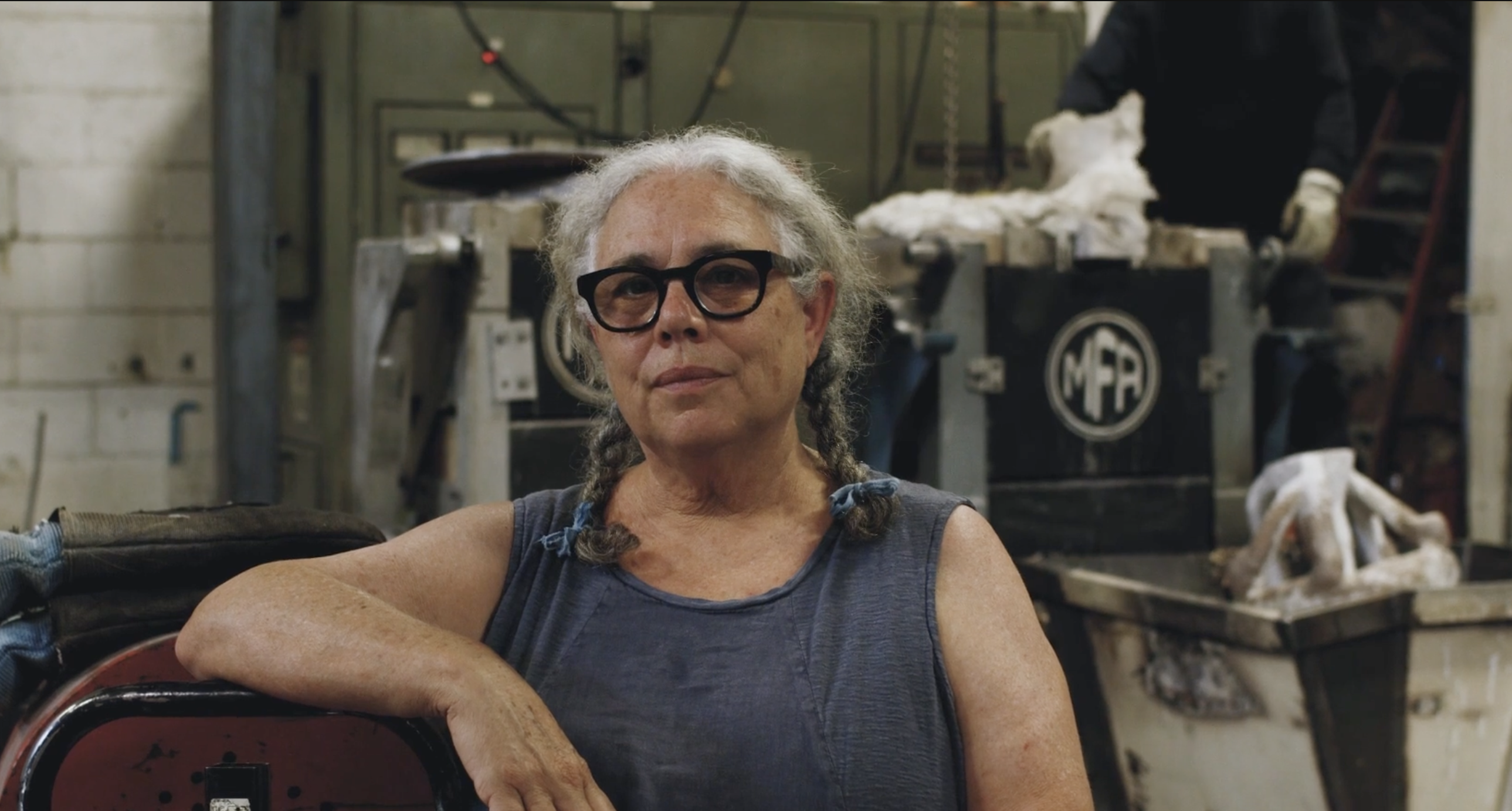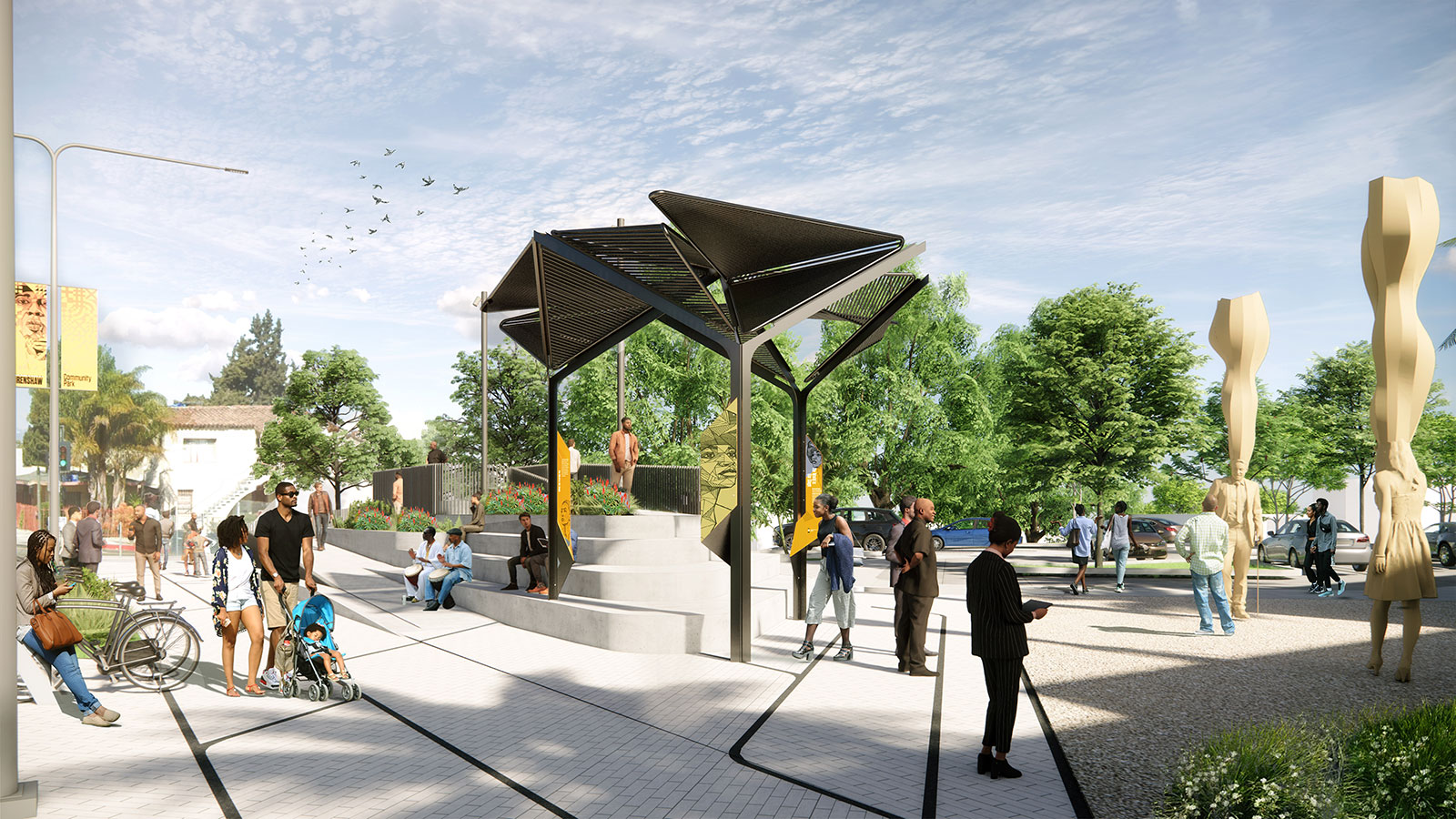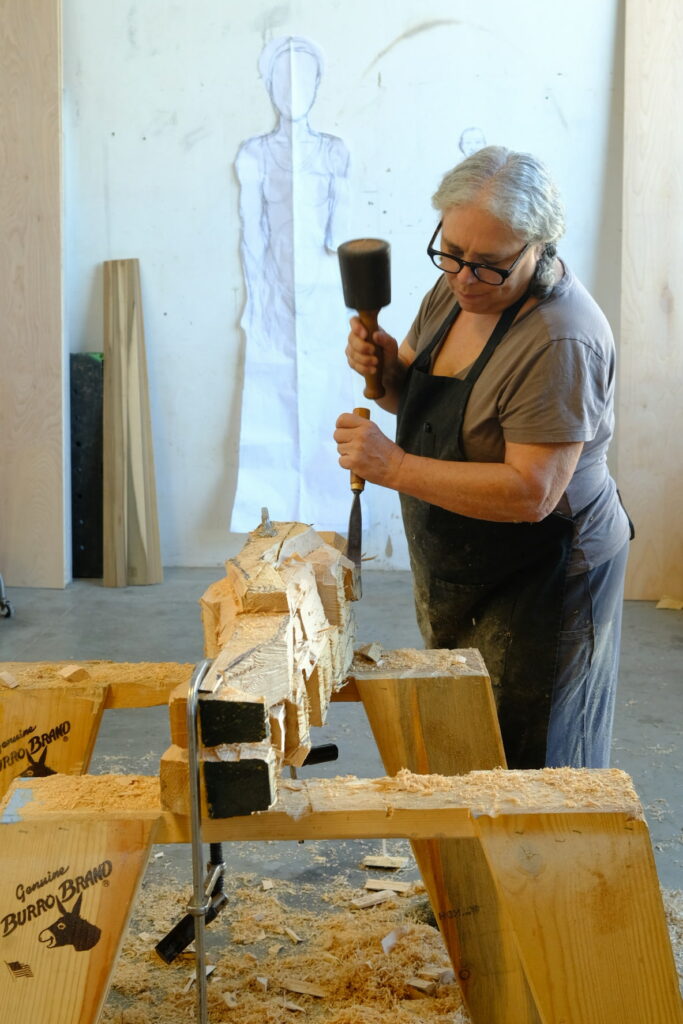DC Commissioned Artist
Alison Saar
Bearing Witness/ 50th St. Park

About
Stories are foundational to Alison Saar’s sculptural practice. What began early in her art career as explorations of her connection to nature and place have evolved to more broadly incorporate a language that merges ethereal spaces of desire, faith and emotion with the physical realities of Black life. Saar, who earned a BFA from Scripps and an MFA from Otis, learned form from many of LA’s sculptural giants including assemblage artists John Outterbridge, Noah Purifoy and her mother Betye Saar. However, she carved out space for herself, working her chainsaw on rough- hewn figures that are sometimes covered in ceiling tin or cast in bronze because she believes the black body matters in aesthetic discourse and community ontology.
DC Featured Art
"Bearing Witness"

Rendering of “Bearing Witness” at 50th St. Park by Perkins & Will
Saar’s sculptural contribution to Destination Crenshaw honors the ways her own history and making intersect with the Boulevard. Two 13ft tall bronze figures stand directly on the pavement, grounded in the past, present and futures of Crenshaw as a place of community, manifestation as well as dreaming. Saar’s man and woman face one another at the crossroads as conjurers, engaging in the iconography that makes Crenshaw a destination – art, music, literature, and everyday objects culled from local thrift stores and cast in bronze. Their enormous coiffures speak to Saar’s use of “Black hair” as potent visual language. Her figures carry these symbols of the community in their hair, providing an architecture made of human labor and innovation.


She recognizes the power of conviction and belief in making and sustaining community, therefore, the work also acts as markers in space and time for spiritual intervention, like the poteau-mitans in Haitian vodou, they are conduits for the spirits to descend to interact with the faithful and ascend back to their realm. These progenitors are both story tellers and portals through which neighbors and visitors can encounter Crenshaw’s historical Black community in its totality.

